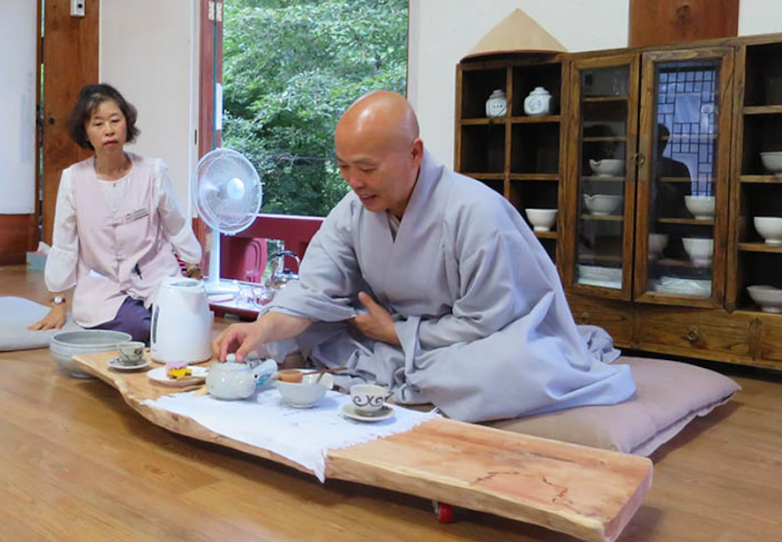HOW TO SPEND TIME IN A SOUTH KOREAN TEMPLE
Do you ever wish you could experience a day in the life of a Buddhist monk? That’s not something you’d normally consider.
It’s simple to become captivated by the stunning temples and peaceful scenery of South Korea.
Approximately 900 Buddhist temples adhere to the country’s traditional architecture. Located halfway between the mountaintop temple of Yonggunsa and the bustling metropolis of Seoul is the unmistakable masterpiece that is Joygesa. No matter how large or small the temple you visit, you will be in awe of its ancient history.
HOW TO RESERVE A TEMPLE STAY IN SOUTH KOREA?
After selecting a destination, you’ll be presented with a variety of lodging possibilities. You can live like a monk for a while if you choose to do an experiential stay. If you just want to kick back for the weekend, you can do a free stay.
The cost is variable based on the selected plan. The approximate cost of your immersive stay is $65 (or 80,000 Korean Won). Everything from lodging to meals to entertainment is covered. In the neighborhood of 60,000KRW (about $55) gets you a night’s free lodging.
STAYING AT JIKJISA TEMPLE IN SOUTH KOREA
In South Korea, visitors can choose from a plethora of temple hotels. But this will be about a temple in Gimcheon called Jikjisa.
First off, I want to stress how much of an open mind you need to try something like this, especially when visiting a religious site.
All of the events are conducted in Korean, but a foreign tour guide will be available to assist you with anything you might need while visiting the temple. What the monks have to say about Buddhism and the rituals is also translated.
THE ACTIVITIES IN SOUTH KOREA
A guide will brief you on the temple’s regulations, such as mealtimes, bedtimes, and uniforms, when you check in and register. A traditional hanok, your place of stay, will be revealed to you as well.
A TEMPLE HISTORY LESSON

The program kicked off with a visit to the temple. The intricately painted temples all had meanings, which the guide explained.
Many of the murals show victims of capital crimes like theft, adultery, etc. The temple’s history will also be explained to you.
THE MONK DIET IN SOUTH KOREA
A monk’s diet in the Buddhist tradition is considered to be ideal for health. They adhere to a vegetarian diet that excludes dairy products. Meals like these typically consist of rice, kimchi, other vegetable side dishes, and soup, and are common in Korea. A word of warning: dinner service begins promptly, and food supplies are limited.
108 PROSTRATIONS
To prepare for meditation or instruction, monks will bow. One of the goals of this ritualized bowing is to jolt you out of your daydreams and back into the here and now.
The Buddhist view is that the mind is divided into 108 different sections. Desire, anger, laziness, and any other emotion or thought that comes to mind can all result from these separate mental spaces.
The goal of performing 108 bows is to bring one’s attention back to the here and now by stimulating all areas of one’s brain. Plus, it’s a great way to learn humility.
The prayer chants were chanted in Korean. It’s not necessary to know Korean to participate; just do as everyone else does. The key is to pay attention to the silence that surrounds you.
MEDITATION WALK FOR CLARITY
Following breakfast, hikers can take in the breathtaking views from the mountaintop. From a pagoda, you can take in the stunning panorama of the valley below.
Our goal was to clear our heads by paying attention to our gait. A walk in the crisp, foggy mountain air at 4 in the morning provides more insight than you could ever hope for.
TEA CEREMONY WITH A MONK IN SOUTH KOREA
Enjoy Dado, East Asia’s simplified take on afternoon tea. You have a pillow to rest on and a tray of snacks like nuts and berries to enjoy with your tea. The monk will brew an earthy tea blend, and you’ll be in charge of serving it.
The monk then provided some historical context for Buddhism. Then he began to elaborate on his background and the events that led him to live in seclusion in a mountain temple. Moreover, he will satisfy your curiosities about temple life by answering your questions.

REFLECTING ON THE 48 HOURS OF MONK LIFE
Living in another world is how the experiential program makes you feel. As a whole, the rest of the world views South Korean culture as one that is constantly on the go. There is a pali-pali mentality (Korean for “hurry”) prevalent in your society.
There were a few flashes of insight at the temple. Initially, it occurred during the 108 bows. You’re in a group of people who don’t share your language or cultural background. However, the whole community regularly gathers to perform rituals of worship.
When it came time for the tea ceremony was the second time. While the tea was being poured, everyone sat quietly on pillows. From the open windows, a chorus of insects could be heard. The swaying of the trees outside brings a soothing breeze inside. There was an odd calm that couldn’t be explained.




